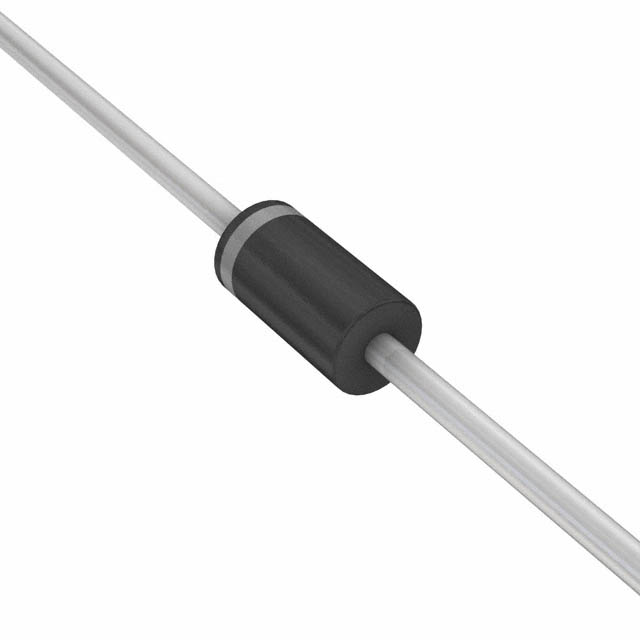P4KE56CAHA0G Encyclopedia Entry
Product Overview
The P4KE56CAHA0G belongs to the category of transient voltage suppressor diodes (TVS diodes). These diodes are commonly used to protect sensitive electronic components from voltage spikes and transients. The P4KE56CAHA0G is designed to provide robust protection against voltage surges, making it suitable for a wide range of applications. Its characteristics include high surge capability, low clamping voltage, and fast response time. The diode is typically packaged in a DO-41 package and is available in various packaging quantities to suit different application requirements.
Specifications
- Part Number: P4KE56CAHA0G
- Category: Transient Voltage Suppressor Diode (TVS Diode)
- Voltage Rating: 56V
- Package Type: DO-41
- Packaging Quantity: Available in reels or bulk packaging
- Clamping Voltage: Low clamping voltage for effective surge protection
- Surge Capability: High surge current handling capacity
- Response Time: Fast response to transient events
Detailed Pin Configuration
The P4KE56CAHA0G TVS diode features a standard axial lead configuration with two leads for easy integration into circuit designs. The pinout configuration is as follows: - Pin 1: Anode - Pin 2: Cathode
Functional Features
- Transient Protection: Effectively suppresses voltage transients and spikes to safeguard sensitive electronic components.
- Fast Response: Rapid response time ensures quick clamping of transient voltages, minimizing the risk of damage.
- High Surge Capability: Capable of handling high surge currents, making it suitable for demanding applications.
Advantages and Disadvantages
Advantages
- Effective protection against voltage surges
- Fast response time
- High surge capability
Disadvantages
- May exhibit leakage current under certain conditions
- Sensitive to reverse polarity
Working Principles
The P4KE56CAHA0G TVS diode operates based on the principle of avalanche breakdown. When a transient voltage spike occurs, the diode rapidly conducts, diverting the excess energy away from the protected circuit. This action effectively clamps the voltage to a safe level, preventing damage to downstream components.
Detailed Application Field Plans
The P4KE56CAHA0G TVS diode finds extensive use in various applications, including: - Power supply protection - Automotive electronics - Industrial control systems - Telecommunication equipment - Consumer electronics
Detailed and Complete Alternative Models
For applications requiring alternative TVS diode models, the following options can be considered: - P6KE68CAHA0G - 1.5KE100CA - SMBJ58CA - SMCJ64A
In conclusion, the P4KE56CAHA0G TVS diode offers reliable transient voltage suppression and surge protection for a diverse range of electronic applications. Its fast response time, high surge capability, and effectiveness make it a valuable component in safeguarding sensitive circuits from voltage transients and spikes.
Word Count: 411
10个与P4KE56CAHA0G在技术解决方案中的应用相关的常见问题及解答
Sure, here are 10 common questions and answers related to the application of P4KE56CAHA0G in technical solutions:
What is P4KE56CAHA0G?
- P4KE56CAHA0G is a type of transient voltage suppressor diode designed to protect electronic circuits from voltage spikes and transients.
What is the maximum voltage rating for P4KE56CAHA0G?
- The maximum voltage rating for P4KE56CAHA0G is 56V.
What is the peak pulse power handling capability of P4KE56CAHA0G?
- P4KE56CAHA0G has a peak pulse power handling capability of 400W.
How does P4KE56CAHA0G protect electronic circuits?
- P4KE56CAHA0G clamps the voltage across the circuit it is protecting, diverting excess current away from sensitive components.
What are the typical applications of P4KE56CAHA0G?
- P4KE56CAHA0G is commonly used in power supplies, automotive electronics, telecommunications equipment, and industrial control systems.
What is the response time of P4KE56CAHA0G to a voltage spike?
- P4KE56CAHA0G has a very fast response time, typically in the nanosecond range, providing quick protection to the circuit.
Can P4KE56CAHA0G be used for overvoltage protection in battery-powered devices?
- Yes, P4KE56CAHA0G can be used to protect battery-powered devices from overvoltage conditions.
Is P4KE56CAHA0G suitable for high-frequency applications?
- Yes, P4KE56CAHA0G is suitable for high-frequency applications due to its fast response time and low capacitance.
What are the temperature specifications for P4KE56CAHA0G?
- P4KE56CAHA0G typically operates within a temperature range of -55°C to 175°C.
Are there any special considerations for PCB layout when using P4KE56CAHA0G?
- It is important to minimize the trace length between the P4KE56CAHA0G and the circuit it is protecting to reduce inductance and maximize its effectiveness.
I hope these answers provide the information you were looking for! If you have any more questions, feel free to ask.


